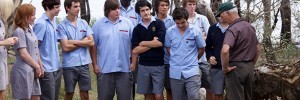Nest boxes for wildlife

A range of native animals require the natural hollows that develop in trees and some shrubs for shelter and/or breeding.
The nest boxes described in this Note are not the equivalent of natural hollows. Natural hollows occur in vegetation at a specific time in the development of the plant community. If the plant community is severely disturbed, merely replacing hollows with a substitute is no compensation for the other changes to that habitat such as disruption and loss of food sources from understorey shrubs and interference with the natural cycles that maintain the health of the ecosystem. It takes over 100 years for natural hollows to develop. Many eucalypts live for hundreds of years providing safe hollows for many generations. The nest boxes described here will last up to ten years.
Nest boxes are used by people who want to observe the wildlife occurring in their area and something of its natural history in a convenient location. In some instances nest boxes have been used as substitutes for a lack of natural hollows and as a research tool. Once again, it should be emphasized that artificial hollows are no substitute for real hollows. As a first step in assisting wildlife you should consider how natural hollows can be protected in your area and make provision for the development of natural hollows, should they be in short supply, by re-establishing local native vegetation.
Natural hollows are often destroyed during firewood collection, fencepost cutting, land clearance, burning and timber harvesting. Think about how you might reduce the impact of these practices in your area. DON'T use hollow logs for nest boxes. Natural hollows are valuable resources for wildlife and should be left in place on a tree or on the ground.
Download support materials
-
How to build nest boxes for wildlife activity sheet.
-
Recommendations from Jim Castles, GBCMA regarding the design of squirrel glider nesting boxes.
-
Recommendations from the Shepparton Field and Game Association.
-
Choice of site can make a big difference to the usefulness of a nest box. It is obviously helpful if we provide shelter close to the food reserves, breeding quarters where the food is most reliable, and somewhere safe for dispersing juveniles to rest while en-route to new territories.